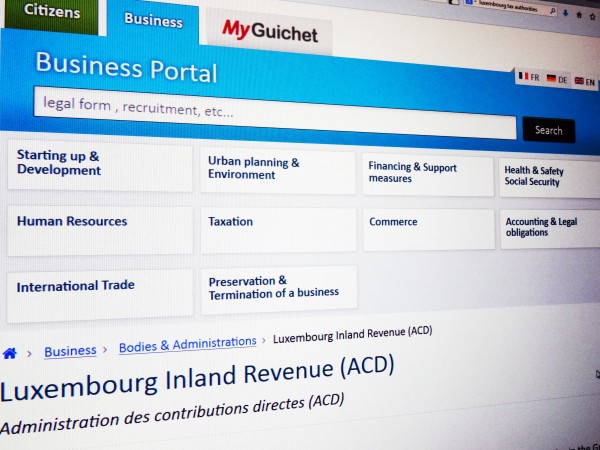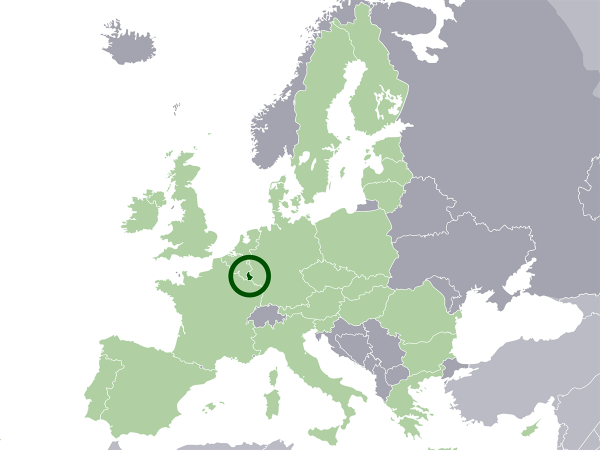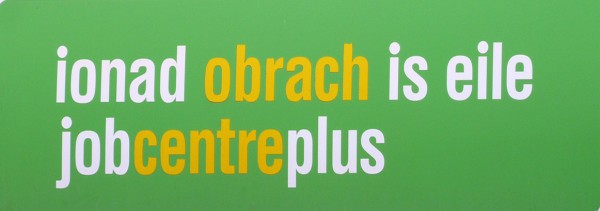 Since the Global Financial Crisis, and especially since 2010, there has been a significant decline in the volume of commercial freight carried by aircraft. Whilst regional and national economies have been hit by fiscal problems, credit snarl-ups and twitchy consumer demand, increases in the price of crude oil (until recently) have compounded air freight cost increases, leading to substitution towards the main alternatives.
Since the Global Financial Crisis, and especially since 2010, there has been a significant decline in the volume of commercial freight carried by aircraft. Whilst regional and national economies have been hit by fiscal problems, credit snarl-ups and twitchy consumer demand, increases in the price of crude oil (until recently) have compounded air freight cost increases, leading to substitution towards the main alternatives.
Whilst some multinational businesses have shifted production back ‘on-shore’, there has been unprecedented growth in sea freight. In the latter case there are, of course, both ‘winners’ and ‘losers’. As the world’s seas and oceans become more and more congested, one of the distinct losers is a large species which shares the water with commercial maritime transport: the whale.
A recent ‘Sharing the Planet’ documentary on BBC Radio 4, highlighted the plight of whales in the world’s open waters. Since the imposition of controls upon the whaling industry, whale numbers had stabilised and even increased. However, the past five years has seen the most significant threat coming from the eerily clinical-sounding ‘ship strike’: that is, unintended incidents of ships hitting and either injuring or killing whales. In particular, the Blue Whale and the Right Whale have been most affected – the Right Whale was almost driven to extinction by ship strikes in the North Atlantic region.
International action is driving a regulatory approach which aims to intervene, for example, to impose speed restrictions in known waters where whales congregate. But this isn’t a universal solution. Even where it is applied, enforcement is tricky and there is industry resistance as already slow shipping freight delivery times are further extended, thus challenging producers under pressure to respond rapidly to changing consumer demand in the world of ecommerce.
But where is the link to the movie Frozen? Well, this year’s top-selling range of toys are tie-ins to Disney’s wintery animated blockbuster. Excess demand for some of the tie-in merchandising has led to  short supply in toy stores and carefully planned production and shipping plans junked. Panicked creation of extra capacity in off-shore production has had to be complemented by the contracting of air freighting options – the lead times are too long to get last-minute products to distributors and retailers in time. Whilst someone has to bear the increased financial cost, the whale might therefore become – at least temporarily – a beneficiary.
short supply in toy stores and carefully planned production and shipping plans junked. Panicked creation of extra capacity in off-shore production has had to be complemented by the contracting of air freighting options – the lead times are too long to get last-minute products to distributors and retailers in time. Whilst someone has to bear the increased financial cost, the whale might therefore become – at least temporarily – a beneficiary.
But the message is clear: globalised production and distribution involve a complex web of trade-offs.  Where negative externalities hit those without a global voice, this adds weight to the continued efforts towards sustainability and the full costing of production and exchange. Whales are a ‘flagship species’ in diverse ecological systems. The planet cannot afford to lose them. And so, whilst your gift purchases this festive season may have been made possible by products having been air-freighted rather than being sent by yet another ship, don't rest on your laurels. Consider this variant on a traditional injunction: whales are for life, and not just for Christmas.
Where negative externalities hit those without a global voice, this adds weight to the continued efforts towards sustainability and the full costing of production and exchange. Whales are a ‘flagship species’ in diverse ecological systems. The planet cannot afford to lose them. And so, whilst your gift purchases this festive season may have been made possible by products having been air-freighted rather than being sent by yet another ship, don't rest on your laurels. Consider this variant on a traditional injunction: whales are for life, and not just for Christmas.
Guest post by Simon Blake, University of Warwick
Books and articles
Nature in the Balance: The Economics of Biodiversity Oxford Dieter Helm and Cameron Hepburn (eds) (2014)
Frozen dolls sell out Express Sarah Ann Harris (9/12/14)
Biodiversity Finance and Economics Tread Softly November 2014
Information
EU Business and Biodiversity Platform EC Environment DG
Whales & Dolphins (cetaceans) World Wildlife Fund
Questions
- Why might UK-based businesses be concerned with the plight of whales in the world’s seas and oceans?
- In what ways might shipping firms – and the manufacturers who contract their services – be regarded as ‘good’ businesses?
- Using the concept of externalities, how would you account for the impacts of global commerce upon whales?
- How could you conduct a scientific evaluation of the trade-offs involved?
- Can damage to one species by the actions of business ever be offset by ‘making good’ through corporate action elsewhere?
 Much of the east coast of England is subject to tidal flooding. One such area is the coastline around the Wash, the huge bay between Norfolk and Lincolnshire. Most of the vulnerable shorelines are protected by sea defences, usually in the form of concrete walls or earth embankments, traditionally paid for by the government. But part of the Norfolk shoreline is protected by shingle banks, which require annual maintenance.
Much of the east coast of England is subject to tidal flooding. One such area is the coastline around the Wash, the huge bay between Norfolk and Lincolnshire. Most of the vulnerable shorelines are protected by sea defences, usually in the form of concrete walls or earth embankments, traditionally paid for by the government. But part of the Norfolk shoreline is protected by shingle banks, which require annual maintenance.
Full government funding for maintaining these banks ended in 2013. According to new government rules, only projects that provide at least £8 of benefits for each £1 spent would qualify for such funding to continue. The area under question on the Norfolk cost of the Wash does not qualify.

Between 2013 and 2015 the work on the shingle banks is being paid for by the local council charging levies. After that, the plan is for a partnership-funding approach, where the government will make a (small) contribution as long as the bulk of the funding comes from the local community. This will involve setting up a ‘community interest company’, which will seek voluntary contributions from local residents, landowners and businesses.
Sea defences are a public good, in that it is difficult to exclude people benefiting who choose not to pay. In other words, there is a ‘free rider’ problem. However, in the case of the Wash shoreline in question, one borough councillor, Brian Long, argues that it might be possible to maintain the flood defences to protect those who do contribute while ignoring those who do not.
Not surprisingly, many residents and businesses argue that the government ought to fund the defences and, if it does have to be financed locally, then everyone should be required to pay their fair share.
Radio podcast
 Holding back the sea BBC Radio 4, David Shukman (19/11/14)
Holding back the sea BBC Radio 4, David Shukman (19/11/14)
Articles
What is the price of holding back the sea? BBC News, David Shukman (19/11/14)
Firms will have to pay towards cost of sea defences between Heacham and Wolferton in West Norfolk EDP24, Chris Bishop (1/8/14)
Businesses between Snettisham and Hunstanton will have to pay for flood defences. EDP24, Chris Bishop (19/11/14)
Wash and west Norfolk sea defence repairs now under way BBC News (13/12/13)
Consultation document
Managing our coastline Borough Council of King’s Lynn and West Norfolk, Environment Agency
Questions
- What are the two main features of a public good? Are sea defences a pure public good?
- Is there a moral hazard if people choose to live in a coastal area that would be subject to flooding without sea defences?
- Who is the ‘public’ in the case of sea defences? Is it the whole country, or the local authority or just all those being protected by the defences?
- What are the problems with relying on voluntary contributions to fund, or partly fund, sea defences? How could the free-rider problem be minimised in such a funding model?
- Discuss the possible interpretations of ‘equity’ when funding sea defences.
- If ‘flood defences could be built or maintained to protect those who do contribute while ignoring those who do not’, does this mean that such defences are not a public good?
- Find out how sea defences are funded in The Netherlands. Should such a funding model be adopted in the UK?
 An investigation by the International Consortium of Investigative Journalists has revealed how more than 1000 businesses from 340 major companies from around the world have used Luxembourg as a base for avoiding huge amounts of tax. Many of the companies are household names, such as Ikea, FedEx, Apple, Pepsi, Coca Cola, Dyson, Amazon, Fiat, Google, Accenture, Burberry, Procter & Gamble, Heinz, JP Morgan, Caterpillar, Deutsche Bank and Starbucks. Through complicated systems of ‘advanced tax agreements’ (ATAs), negotiated with the Luxembourg authorities via accountants PricewaterhouseCoopers (PwC), companies have used various methods of avoiding tax.
An investigation by the International Consortium of Investigative Journalists has revealed how more than 1000 businesses from 340 major companies from around the world have used Luxembourg as a base for avoiding huge amounts of tax. Many of the companies are household names, such as Ikea, FedEx, Apple, Pepsi, Coca Cola, Dyson, Amazon, Fiat, Google, Accenture, Burberry, Procter & Gamble, Heinz, JP Morgan, Caterpillar, Deutsche Bank and Starbucks. Through complicated systems of ‘advanced tax agreements’ (ATAs), negotiated with the Luxembourg authorities via accountants PricewaterhouseCoopers (PwC), companies have used various methods of avoiding tax.
Although such measures are legal, they have denied other countries vast amounts of tax revenues on sales generated in their own countries. Instead, the much reduced tax bills have been paid to Luxembourg. The result is that this tiny country, with a population of just 550,000, has, according to the IMF, the highest (nominal) GDP per head in the world (estimated to be $116,752 in 2014).
 So what methods do Luxembourg and these multinational companies use to reduce the companies’ tax bills? There are three main methods. All involve having a subsidiary based in Luxembourg: often little more than a small office with one employee, a telephone and a bank account. All involve varieties of transfer pricing: setting prices that the company charges itself in transactions between a subsidiary in Luxembourg and divisions in other countrries.
So what methods do Luxembourg and these multinational companies use to reduce the companies’ tax bills? There are three main methods. All involve having a subsidiary based in Luxembourg: often little more than a small office with one employee, a telephone and a bank account. All involve varieties of transfer pricing: setting prices that the company charges itself in transactions between a subsidiary in Luxembourg and divisions in other countrries.
The first method is the use of internal loans. Companies lend money to themselves, say in the UK, from Luxembourg at high interest rates. The loan interest can be offset against profit in the UK, reducing tax liability to the UK tax authorities. But the interest earned by the Luxembourg subsidiary incurs very low taxes. Profits are thus effectively transferred from the UK to Luxembourg and a much lower tax bill is incurred.
The second involves royalty payments for the use of the company’s brands. These are owned by the Luxembourg subsidiary and the overseas divisions pay the Luxembourg subsidiary large sums for using the logos, designs and brand names. Thus, again, profits are transferred to Luxembourg, where there is a generous tax exemption.
The third involves generous allowances in Luxembourg for losses in the value of investments, even without the company having first to sell the investments. These losses can be offset against future profits, again reducing tax liability. By transferring losses made elsewhere to Luxembourg, again usually by some form of transfer pricing, these can be used to reduce the already small tax bill in Luxembourg even further.
 Tax loopholes offered by tax havens, such as Luxembourg, the Cayman Islands and the Channel Islands, are denying exchequers around the world vast sums. Not surprisingly, countries, especially those with large deficits, are concerned to address the issue of tax avoidance by multinationals. This is one item on the agenda of the G20 meeting in Brisbane from the 12 to 16 November 2014.
Tax loopholes offered by tax havens, such as Luxembourg, the Cayman Islands and the Channel Islands, are denying exchequers around the world vast sums. Not surprisingly, countries, especially those with large deficits, are concerned to address the issue of tax avoidance by multinationals. This is one item on the agenda of the G20 meeting in Brisbane from the 12 to 16 November 2014.
The problem, however, is that, with countries seeking to attract multinational investment and to gain tax revenues from them, there is an incentive to reduce corporate tax rates. Getting any binding agreement on tax harmonisation, and creating an essentially global single market, is likely, therefore, to prove virtually impossible.
Webcasts and videos
 Luxembourg Leaks: Tricks of the Trade ICIJ in partnership with the Pulitzer Center (5/11/14)
Luxembourg Leaks: Tricks of the Trade ICIJ in partnership with the Pulitzer Center (5/11/14)
 Luxembourg ‘abetted’ companies in avoiding taxes France 24, Siobhán Silke (6/11/14)
Luxembourg ‘abetted’ companies in avoiding taxes France 24, Siobhán Silke (6/11/14)
 Tax deals with Luxembourg save companies billions, says report Deutsche Welle, Dagmar Zindel (6/11/14)
Tax deals with Luxembourg save companies billions, says report Deutsche Welle, Dagmar Zindel (6/11/14)
 Luxembourg: the tax haven and the $870m loan company above a stamp shop The Guardian, John Domokos, Rupert Neate and Simon Bowers (5/11/14)
Luxembourg: the tax haven and the $870m loan company above a stamp shop The Guardian, John Domokos, Rupert Neate and Simon Bowers (5/11/14)
 Luxembourg leaks: nation under spotlight over tax avoidance claims euronews (6/11/14)
Luxembourg leaks: nation under spotlight over tax avoidance claims euronews (6/11/14)
 Northern and Shell used west Dublin address to cut Luxembourg tax bill on €1bn The Irish Times, Colm Keena (6/11/14)
Northern and Shell used west Dublin address to cut Luxembourg tax bill on €1bn The Irish Times, Colm Keena (6/11/14)
 The ATO’s global tax avoidance investigation ABC News, Phillip Lasker (9/11/14)
The ATO’s global tax avoidance investigation ABC News, Phillip Lasker (9/11/14)
 Pepsi, IKEA Secret Luxembourg Tax Deals Exposed TheLipTV, Elliot Hill (9/11/14)
Pepsi, IKEA Secret Luxembourg Tax Deals Exposed TheLipTV, Elliot Hill (9/11/14)
Articles
Leaked Docs Expose More Than 340 Companies’ Tax Schemes In Luxembourg Huffington Post, Leslie Wayne, Kelly Carr, Marina Walker Guevara, Mar Cabra and Michael Hudson (5/11/14)
Luxembourg tax files: how tiny state rubber-stamped tax avoidance on an industrial scale The Guardian, Simon Bowers (5/11/14)
Fact and fiction blur in tales of tax avoidance The Guardian (9/11/14)
companies engaged in tax avoidance The Guardian, Michael Safi (6/11/14)
The Guardian view on tax avoidance: Europe must take Luxembourg to task The Guardian, Editorial (6/11/14)
G20 leaders in the mood to act on tax avoidance after Luxembourg leaks Sydney Morning Herald, Tom Allard (6/11/14)
Scale of Luxembourg tax avoidance revealed economia, Oliver Griffin (6/11/14)
EU to press Luxembourg over tax breaks amid fresh allegations BBC News (6/11/14)
Luxembourg leaks: G20 alone can’t stamp out tax avoidance The Conversation, Charles Sampford (7/11/14)
‘Lux leaks’ scandal shows why tax avoidance is a bad idea European Voice, Paige Morrow (8/11/14)
EU to Probe Luxembourg’s ‘Sweetheart Tax Deal’ with Amazon International Business Times, Jerin Mathew (7/10/14)
Investigative Project
Luxembourg Leaks: Global Companies’ Secrets Exposed The International Consortium of Investigative Journalists (5/11/14)
Questions
- Distinguish between tax avoidance and tax evasion. Which of the two is being practised by companies in their arrangements with Luxembourg?
- Explain what is meant by transfer pricing.
- Do a search of companies to find out what parts of their operations as based in Luxembourg.
- In what sense can the setting of corporate taxes be seen as a prisoner’s dilemma game between countries?
- Discuss the merits of changing corporate taxes so that they are based on revenues earned in a country rather than on profits.
- What type of agreement on tax havens is likely to be achieved by the international community?
- Is it desirable for companies to be able to offset losses against future profits?
 Economic journalists, commentators and politicians have been examining the possible economic effects of a Yes vote in the Scottish independence referendum on 18 September. For an economist, there are two main categories of difficulty in examining the consequences. The first is the positive question of what precisely will be the consequences. The second is
Economic journalists, commentators and politicians have been examining the possible economic effects of a Yes vote in the Scottish independence referendum on 18 September. For an economist, there are two main categories of difficulty in examining the consequences. The first is the positive question of what precisely will be the consequences. The second is  the normative question of whether the likely effects will be desirable or undesirable and how much so.
the normative question of whether the likely effects will be desirable or undesirable and how much so.
The first question is largely one of ‘known unknowns’. This rather strange term was used in 2002 by Donald Rumsfeld, US Secretary of Defense, in the context of intelligence about Iraq. The problem is a general one about forecasting the future. We may know the types of thing that are likely happen, but the magnitude of the outcome cannot be precisely known because there are so many unknowable things that can influence it.
Here are some known issues of Scottish independence, but with unknown consequences (at least in precisely quantifiable terms). The list is certainly not exhaustive and you could probably add more questions yourself to the list.
|
|
| • |
Will independence result in lower or higher economic growth in the short and long term? |
| • |
Will there be a currency union, with Scotland and the rest of the UK sharing the pound and a central bank? Or will Scotland merely use the pound outside a currency union? Would it prefer to have its own currency or join the euro over the longer term? |
| • |
What will happen to the sterling exchange rate with the dollar, the euro and various other countries? |
| • |
How will businesses react? Will independence encourage greater inward investment in Scotland or will there be a net capital outflow? And either way, what will be the magnitude of the effect? |
| • |
How will assets, such as oil, be shared between Scotland and the rest of the UK? And how will national debt be apportioned? |
| • |
How big will the transition costs be of moving to an independent Scotland? |
| • |
How will independence impact on Scottish trade (a) with countries outside the UK and (b) with the rest of the UK? |
| • |
What will happen about Scotland’s membership of the EU? Will other EU countries, such as Spain (because of its concerns about independence movements in Catalonia and the Basque country), attempt to block Scotland remaining in or rejoining the EU? |
| • |
What will happen to tax rates in Scotland, with the new Scottish government free to set its own tax rates? |
| • |
What will be the consequences for Scottish pensions and the Scottish pensions industry? |
| • |
What will happen to the distribution of income in Scotland? How might Scottish governments behave in terms of income redistribution and what will be its consequences on output and growth? |
Of course, just because the effects cannot be known with certainty, attempts are constantly being made to quantify the outcomes in the light of the best information available at the time. These are refined as circumstances change and newer data become available.
 But forecasts also depend on the assumptions made about the post-referendum decisions of politicians in Scotland, the rest of the UK and in major trading partner countries. It also depends on assumptions about the reactions of businesses. Not surprisingly, both sides of the debate make assumptions favourable to their own case.
But forecasts also depend on the assumptions made about the post-referendum decisions of politicians in Scotland, the rest of the UK and in major trading partner countries. It also depends on assumptions about the reactions of businesses. Not surprisingly, both sides of the debate make assumptions favourable to their own case.
Then there is the second category of question. Even if you could quantify the effects, just how desirable would they be? The issue here is one of the weightings given to the various costs and benefits. How would you weight distributional consequences, given that some people will gain or lose more than others? What social discount rate would you apply to future costs and benefits?
Then there are the normative and largely unquantifiable costs and benefits. How would you assess the desirability of political consequences, such as greater independence in decision-making or the break-up of a union dating back over 300 years? But these questions about nationhood are crucial issues for many of the voters.
Articles
Scottish Independence would have Broad Impact on UK Economy NBC News, Catherine Boyle (9/9/14)
Scottish independence: the economic implications The Guardian, Angela Monaghan (7/9/14)
Scottish vote: Experts warn of potential economic impact BBC News, Matthew Wall (9/9/14)
The economics of Scottish independence: A messy divorce The Economist (21/2/14)
Dispute over economic impact of Scottish independence Financial Times, Mure Dickie, Jonathan Guthrie and John Aglionby (28/5/14)
10 economic benefits for a wealthier independent Scotland Michael Gray (6/3/14)
Scottish independence, UK dependency New Economics Foundation (NEF), James Meadway (4/9/14)
Scottish Jobs and the World Economy Scottish Economy Watch, Brian Ashcroft (25/8/14)
Scottish yes vote: what happens to the pound in your pocket? Channel 4 News (9/9/14)
What price Scottish independence? BBC News, Robert Peston (12/9/14)
What price Scottish independence? BBC News, Robert Peston (7/9/14)
Economists can’t tell Scots how to vote BBC News, Robert Peston (16/9/14)
Books and Reports
The Economic Consequences of Scottish Independence Scottish Economic Society and Helmut Schmidt Universität, David Bell, David Eiser and Klaus B Beckmann (eds) (August 2014)
The potential implications of independence for businesses in Scotland Oxford Economics, Weir (April 2014)
Questions
- What is a currency union? What implications would there be for Scotland being in a currency union with the rest of the UK?
- If you could measure the effects of independence over the next ten years, would you treat £1m of benefits or costs occurring in ten years’ time the same as £1m of benefits and costs occurring next year? Explain.
- Is it inevitable that events occurring in the future will at best be known unknowns?
- If you make a statement that something will occur in the future and you turn out to be wrong, was your statement a positive one or a normative one?
- What would be the likely effects of Scottish independence on the current account of the balance of payments (a) for Scotland; (b) for the rest if the UK?
- How does inequality in Scotland compare with that in the rest of the UK and in other countries? Why might Scottish independence lead to a reduction in inequality? (See the chapter on inequality in the book above edited by David Bell, David Eiser and Klaus B Beckmann.)
- One of the problems in assessing the arguments for a Yes vote is uncertainty over what would happen if there was a majority voting No. What might happen in terms of further devolution in the case of a No vote?
- Why is there uncertainty over the amount of national debt that would exist in Scotland if it became independent?
 What does it take to create a successful business? From the looks of it: mud, electric barbed wire, icy water, enormous walls to climb, big jumps to make, team work and complete exhaustion – the recipe for every successful business.
What does it take to create a successful business? From the looks of it: mud, electric barbed wire, icy water, enormous walls to climb, big jumps to make, team work and complete exhaustion – the recipe for every successful business.
Tough Mudder was founded in 2010 and runs gruelling extreme obstacle courses for anyone mad enough to think it might be fun. In the BBC News article below, you’ll see that there is a discussion as to intellectual property rights, but whatever the outcome, this company has become the main provider of such extreme sports in a remarkably short period of time. Within 2 years of being established, it had gained 500,000 participants and now records annual revenues of more than £60m. Add to this, that there has no external funding and this organic growth is beyond impressive.
A key question, then, is what creates such a successful business? Without a doubt, this depends on the product you are selling and the market a firm is in, but there are some aspects that apply across the board. Understanding what your customers want is crucial, as they represent your demand. Differentiating your product to create inelastic demand may be a good strategy to enable price rises, without losing a large number of sales, but the differentiated product is essential in establishing demand, loyalty and reputation. Marketing something in the right way and to the right audience is crucial – word-of-mouth is often the most effective form of advertising.
If you have all of these aspects, then you have the makings of a successful business. The next step is putting it into practice and climbing those high walls, taking the big jumps and hopefully avoiding the mud and ice. The following article considers Will Dean and his fast growing business.
Will Dean: ‘The Mark Zuckerberg of extreme sports’ BBC News, Will Smale (9/6/14)
Questions
- If you were starting up a business, how might you go about finding out if there is a demand for your product?
- Why is product differentiation a key aspect of a successful business? Using a diagram, explain how this might help a firm increase revenue and profits.
- What forms of marketing might be used in persuading customers to buy your product?
- In the case of Tough Mudder, which aspects have proved the most important in creating such a successful business?
- Are there any barriers to the entry of new firms in this sector? If so, what are they are how important are they in allowing Tough Mudder to retain a monopoly position?
- Which factors should be considered by a company when it is thinking of global expansion?
 Since the Global Financial Crisis, and especially since 2010, there has been a significant decline in the volume of commercial freight carried by aircraft. Whilst regional and national economies have been hit by fiscal problems, credit snarl-ups and twitchy consumer demand, increases in the price of crude oil (until recently) have compounded air freight cost increases, leading to substitution towards the main alternatives.
Since the Global Financial Crisis, and especially since 2010, there has been a significant decline in the volume of commercial freight carried by aircraft. Whilst regional and national economies have been hit by fiscal problems, credit snarl-ups and twitchy consumer demand, increases in the price of crude oil (until recently) have compounded air freight cost increases, leading to substitution towards the main alternatives. short supply in toy stores and carefully planned production and shipping plans junked. Panicked creation of extra capacity in off-shore production has had to be complemented by the contracting of air freighting options – the lead times are too long to get last-minute products to distributors and retailers in time. Whilst someone has to bear the increased financial cost, the whale might therefore become – at least temporarily – a beneficiary.
short supply in toy stores and carefully planned production and shipping plans junked. Panicked creation of extra capacity in off-shore production has had to be complemented by the contracting of air freighting options – the lead times are too long to get last-minute products to distributors and retailers in time. Whilst someone has to bear the increased financial cost, the whale might therefore become – at least temporarily – a beneficiary. Where negative externalities hit those without a global voice, this adds weight to the continued efforts towards sustainability and the full costing of production and exchange. Whales are a ‘flagship species’ in diverse ecological systems. The planet cannot afford to lose them. And so, whilst your gift purchases this festive season may have been made possible by products having been air-freighted rather than being sent by yet another ship, don't rest on your laurels. Consider this variant on a traditional injunction: whales are for life, and not just for Christmas.
Where negative externalities hit those without a global voice, this adds weight to the continued efforts towards sustainability and the full costing of production and exchange. Whales are a ‘flagship species’ in diverse ecological systems. The planet cannot afford to lose them. And so, whilst your gift purchases this festive season may have been made possible by products having been air-freighted rather than being sent by yet another ship, don't rest on your laurels. Consider this variant on a traditional injunction: whales are for life, and not just for Christmas.








